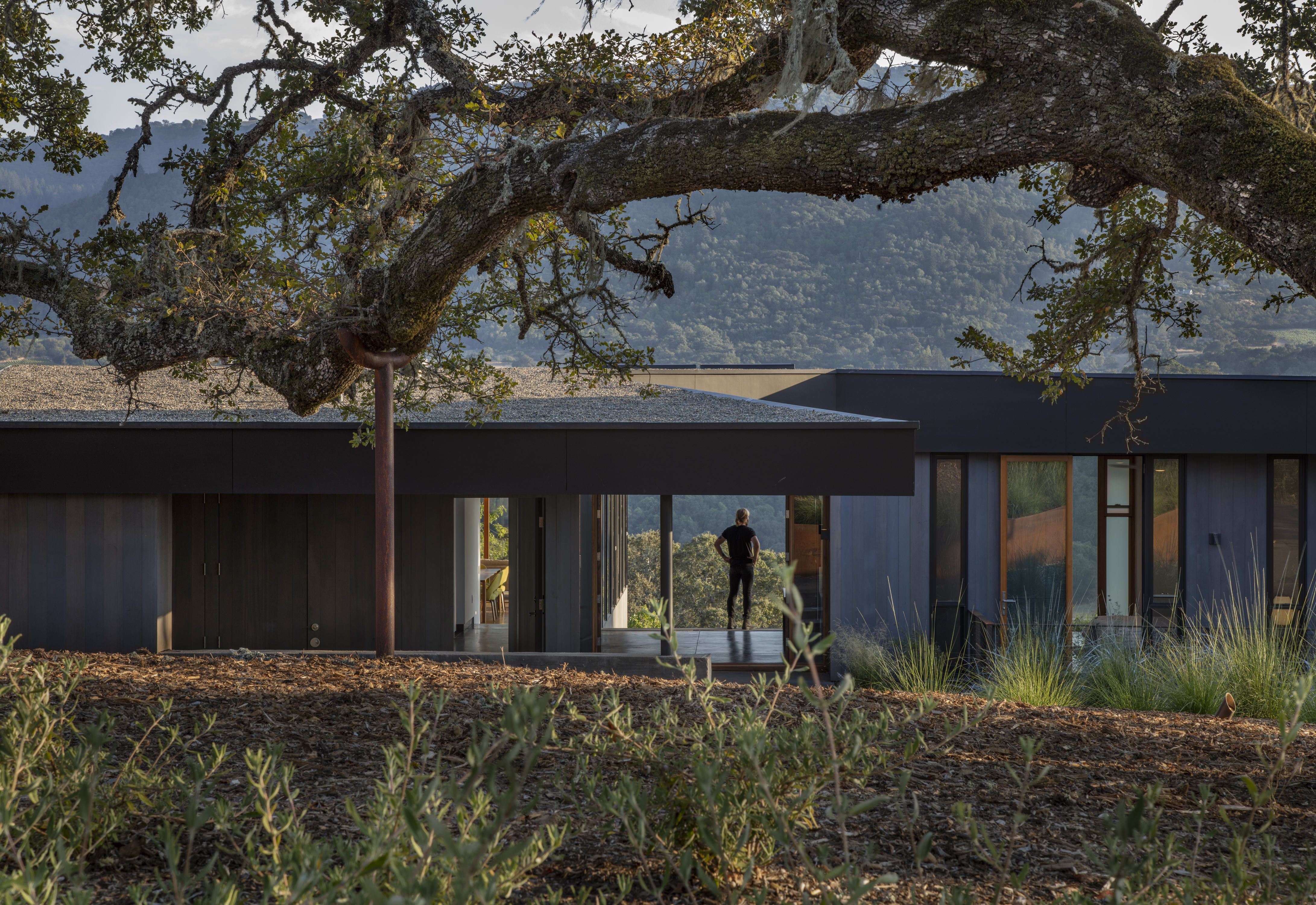The Lichen House
Sometimes the distinctive feel of a site forces us to look more closely to fully understand its sway. Here, at the top of a Sonoma ridge, we found a knoll of massive oaks draped in Ramalina lace lichen, also known as Spanish Moss. Beautiful, but also inspiring to us as architects because of the deeply dappled outdoor ‘rooms’ the veils of lichen create.






The Lichen House nestles within the fog and oaks in the hills above California’s Sonoma Valley. The free-ranging branches of the site’s mature oak trees support lacy veils of lichen that filter sunlight, capture moisture and nutrients for their hosts, and remove pollutants from the air through photosynthesis.






Taking inspiration from the way lichen freely seeks out its most sustainable micro-climates, we pulled the ends of the home toward long views and dialed in each room to its own ‘microclimate’ of views, solar orientation, quality of light, air flow and privacy.






Integral to the concept and design of the Lichen House is a porous and breathable building envelope accepting, filtering, and processing external conditions like the lichen that inspires the design. A south-facing unconditioned hallway along the private wing serves as a thermal buffer. This zone protects the sleeping quarters from direct southern exposure, dampening heat loss and heat gain while promoting natural airflow –effectively minimizing the heating and cooling loads of the house.







We placed a small work studio and guest house down the hill from the main house –a private retreat overlooking the views of the valley below.




















